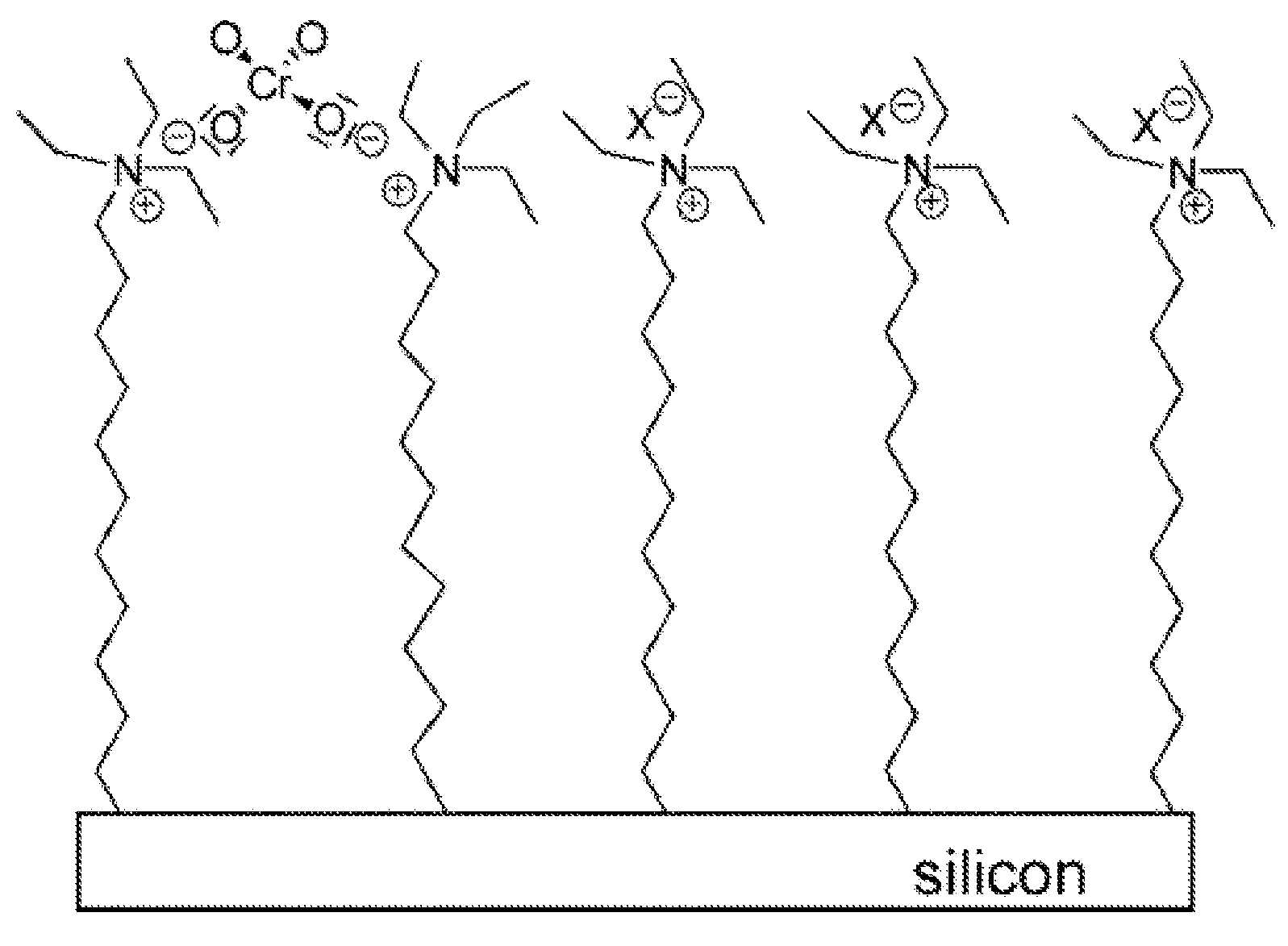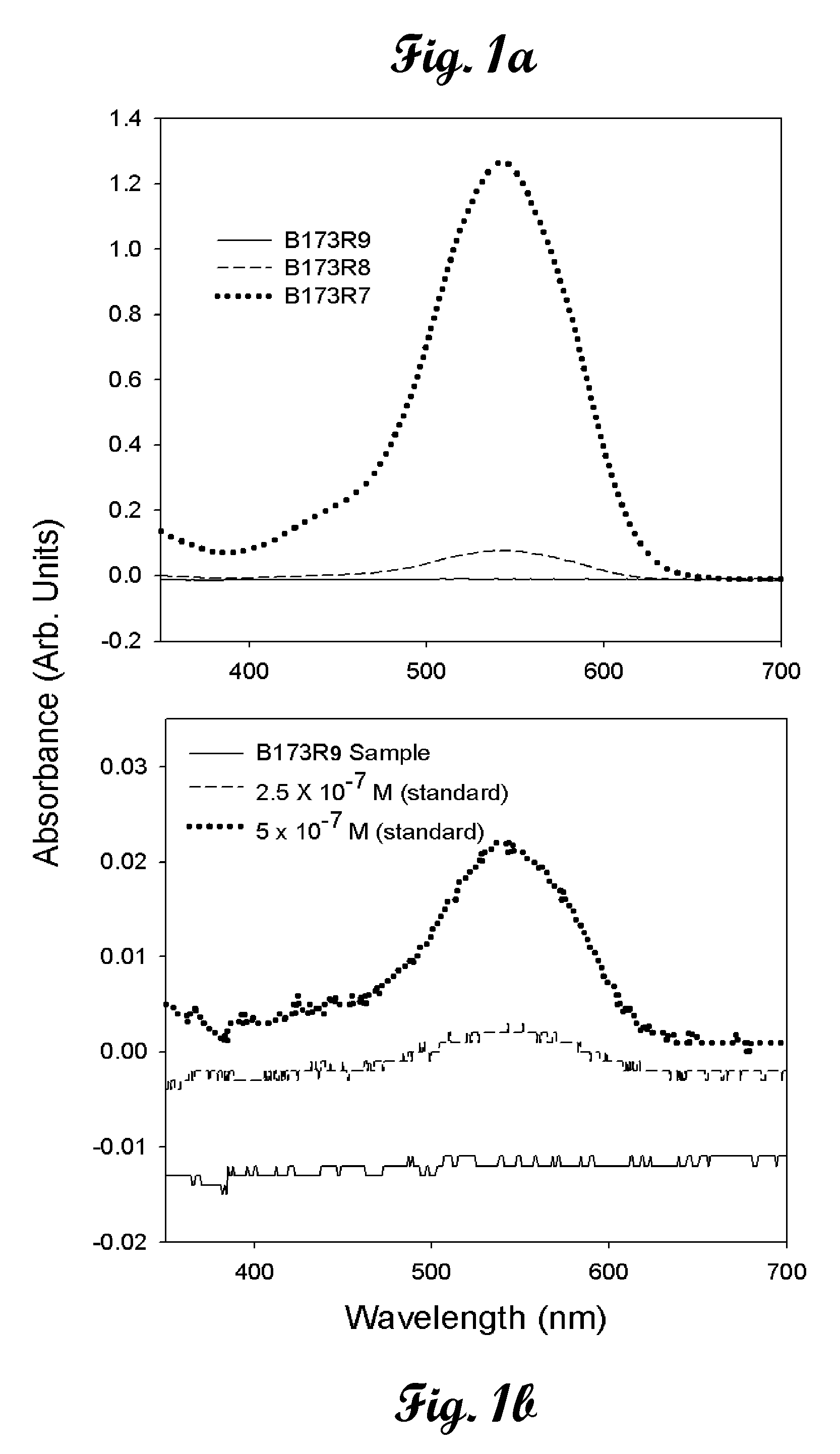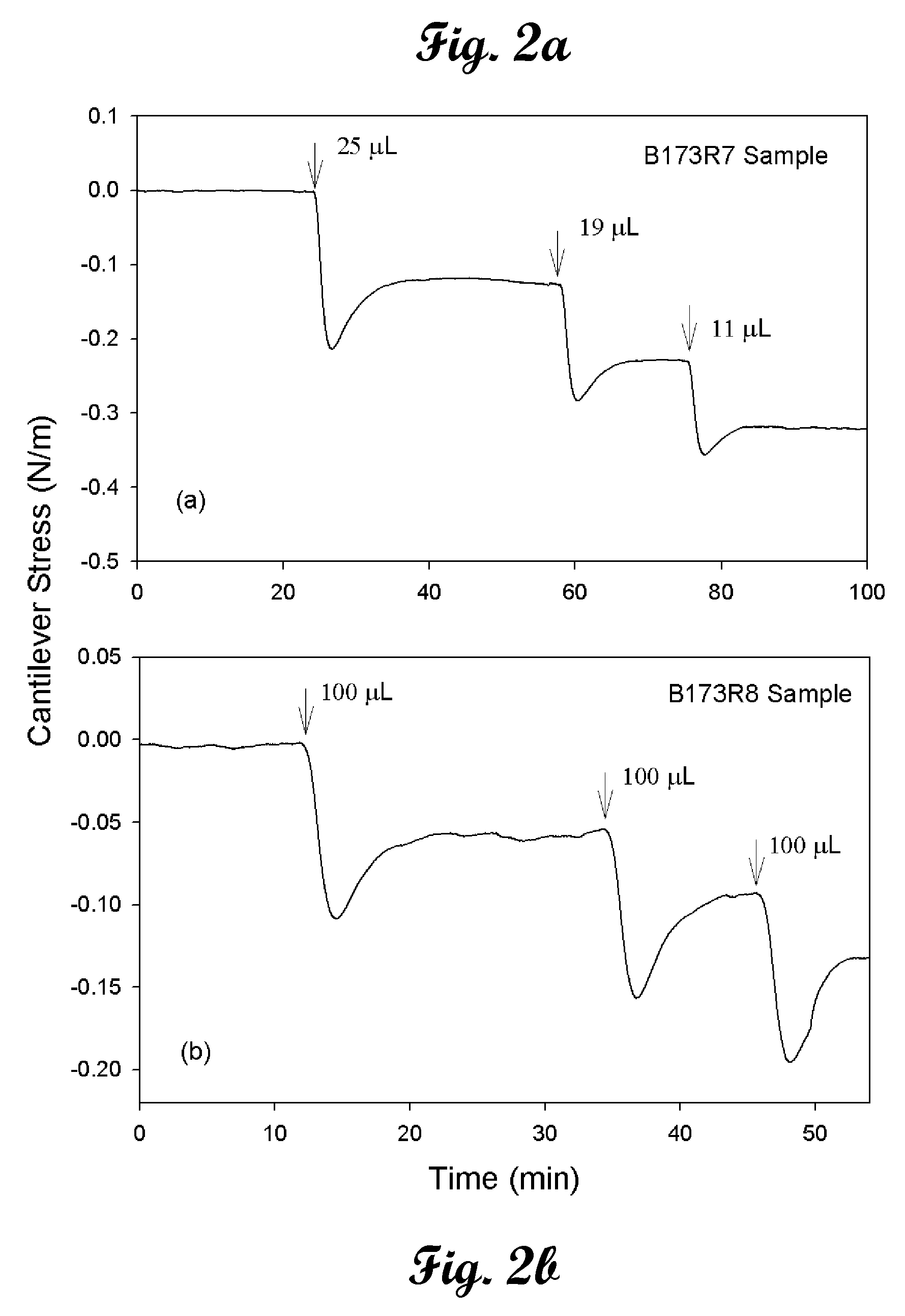Method of making gold thiolate and photochemically functionalized microcantilevers
a technology of photochemical functionalization and microcantilever, which is applied in the direction of instruments, specific gravity measurement, electric/magnetic/electromagnetic heating, etc., can solve the problems of large surface forces, no particular chemical selectivity, and extremely sensitive microcantilever-based sensors
- Summary
- Abstract
- Description
- Claims
- Application Information
AI Technical Summary
Benefits of technology
Problems solved by technology
Method used
Image
Examples
Embodiment Construction
[0021]Chromate cantilever sensors using two different types of chromate-specific surface functionalities bound to gold-coated cantilever surfaces as thiol-based pyridine and thiol-based quaternary ammonium terminated self-assembled monolayers (SAMs) are described. The 4-mercaptopyridine based microcantilever chromate sensor has exceptional stability and very high selectivity and can be used for months in acidic media utilizing a single cantilever. The 12-mercaptododecyltriethylammonium bromide based chromate sensor, despite its superior initial sensitivity to chromate, appeared to be unstable and lost its activity within 1 week. Ethanol solutions of the quaternary ammonium terminated thiol (˜1 mM) from the self-assembly process were studied 2 weeks after the cantilever treatment and indicated significant degradation of the quaternary ammonium thiol. Some decomposition was also detected in the solid compound, which was stored in a closed container for a similar time period. We hypoth...
PUM
 Login to View More
Login to View More Abstract
Description
Claims
Application Information
 Login to View More
Login to View More - R&D Engineer
- R&D Manager
- IP Professional
- Industry Leading Data Capabilities
- Powerful AI technology
- Patent DNA Extraction
Browse by: Latest US Patents, China's latest patents, Technical Efficacy Thesaurus, Application Domain, Technology Topic, Popular Technical Reports.
© 2024 PatSnap. All rights reserved.Legal|Privacy policy|Modern Slavery Act Transparency Statement|Sitemap|About US| Contact US: help@patsnap.com










